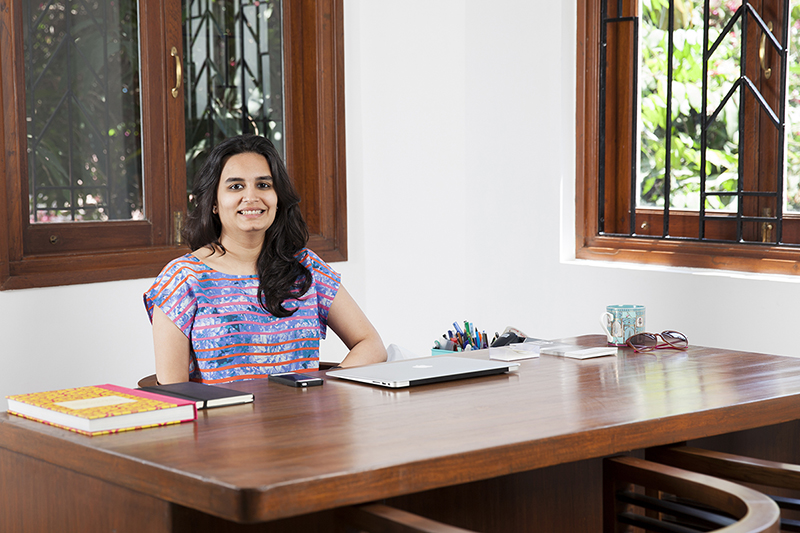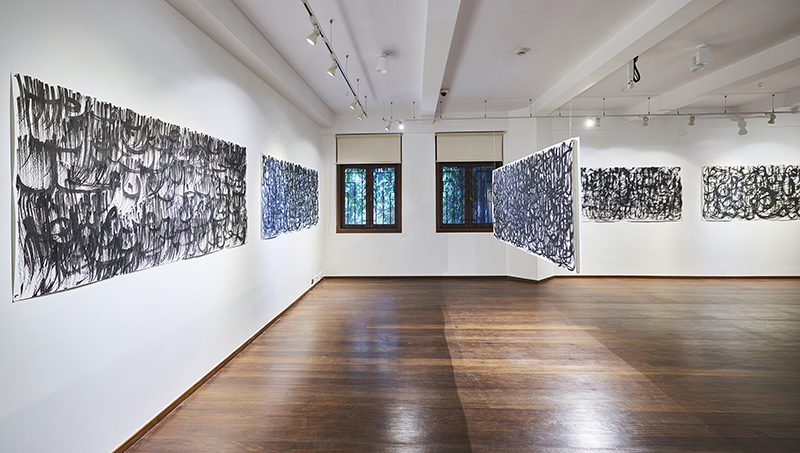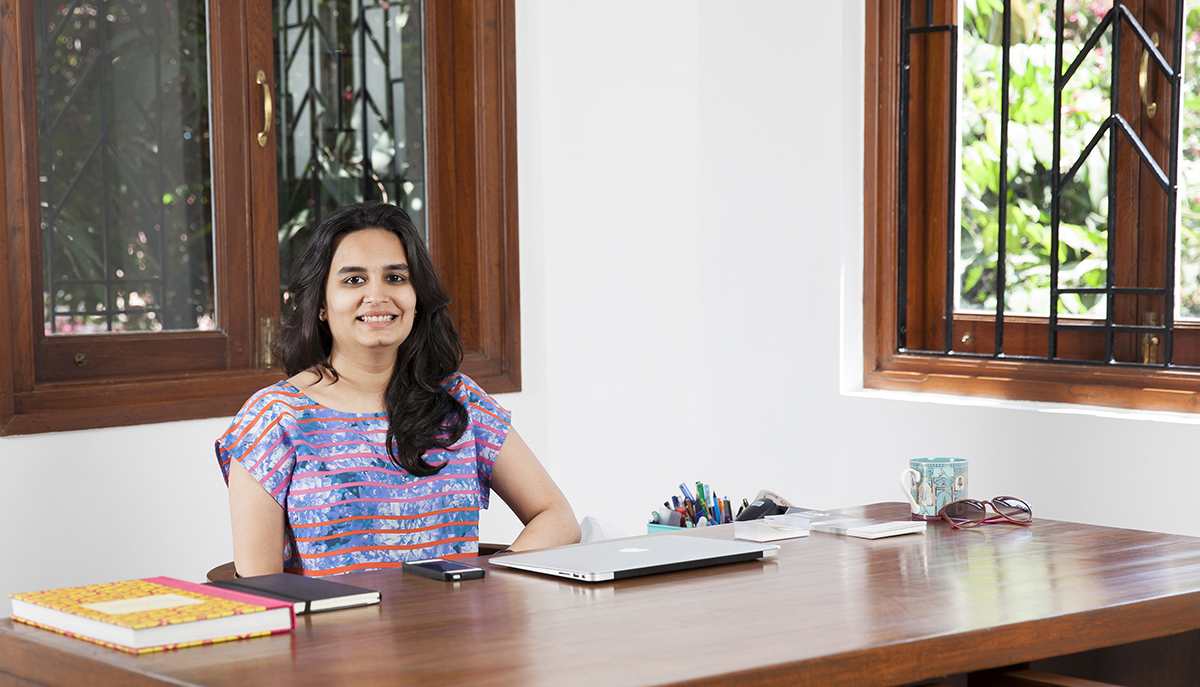Hena Kapadia, director TARQ Art Gallery, has a long-term approach to her curatorial decisions as she feels drawn to the artists’ process as much as the final artwork. She talks about pivoting her self-made brand to face the new normal, while staying true to her founding principals, in an interview with Sonalee Tomar.
TARQ was built with the intention of creating a meaningful conversation around art and its myriad connotations and contexts. It was envisioned as something of an incubator for young contemporary artists working towards pushing the boundaries of how contemporary art in India is exhibited and perceived.

Featured image and above: Hena Kapadia, Director, TARQ Art gallery. Image courtesy TARQ.
What were you working on when the lockdown was announced?
When the lockdown was announced, Team TARQ was in the middle of minor renovations at the gallery. We were also working on a group exhibition to be curated by Sitara Chowfla, which in light of global developments has been postponed to later this year.
How has this affected your programming and plans?
Our new reality is one that has been and continues to be an adjustment on a daily basis. With heightened restrictions and having to stay in place, we have adapted to the momentary pause in our lives by giving our audiences a chance to experience art virtually. We are working on a series of online exhibitions, the first of which, “Resurgence” is available to view on our website. In tandem with these exhibitions, we are trying to replicate our engagement program (albeit online) through our various social media channels.
This has allowed us to keep our doors open virtually so that our visitors can continue to view, interact and engage with art from any part of the world.
What would elevate artists’ life during this period?
It is encouraging to see how the arts and culture sector are teaming together to support artists during this time. There are numerous foundations and initiatives finding ways to support artists struggling at this time.
The main thing is to keep the conversations open and moving forward through this time.
Many people are using social media platforms to connect and build conversations across various disciplines. I think a lot of artists may explore this new uncertainty we find ourselves in and they may even enjoy isolation, using the time to continue the process of creation which means staying connected with their work.
I’d also like to recommend this resource for artists.

First Floor. 2019. TARQ Art gallery. Image courtesy TARQ.
What kind of critical inputs does the art world (stakeholders) need at this moment to overcome the loss of income and opportunity as a direct result of the lock-downs worldwide?
I think the key thing at this time for business owners in the artworld, as in any industry, is to see how one’s business model can be modified to cope with the current reality. This could mean reducing fixed costs and managing cash flows more effectively.
How are you balancing life and work at home during this period?
For me, continuing to have some semblance of a routine has been effective in maintaining a work and home life balance during this quarantine period. As a team, we continue to work remotely and find novel ways to highlight our artists and keep our audiences engaged through various social media platforms.
Let’s start at the beginning. Tell us what led to this journey with art?
After majoring in art history and economics from Tufts University in Boston, I pursued my master’s degree in Modern and Contemporary Art World Practice at Christie’s Education at the University of Glasgow, in London. Over time, my involvement in the domain of art in various capacities in India and abroad led to TARQ in Mumbai.

Ground Floor. 2020. TARQ Art gallery. Image courtesy TARQ.
How do you describe yourself in the context of challenging people’s perspectives via your work?
TARQ was built with the intention of creating a meaningful conversation around art and its myriad connotations and contexts. It was envisioned as something of an incubator for young contemporary artists working towards pushing the boundaries of how contemporary art in India is exhibited and perceived. TARQ’s youthful and experimental ethos encourages collectors, novice and seasoned alike, to approach art collecting through a perspective that marries thoughtfulness with an inquisitive eye for aesthetics and artistic processes.
Our robust programming encompasses workshops, engaging walkthroughs with the artist, film screenings and art talks tied to the exhibition and the gallery’s overall raison d’être. This allows for multiple types of audiences to engage with art in new and impactful ways.
As the gallery director, my role is multi-layered and adaptive. I simultaneously work with the artists we represent, envision the year ahead, build relationships, think of new innovative approaches to engaging clients and work on audience outreach. Every day is a new opportunity to engage collectors in the young innovative artists we represent at TARQ.

Ground Floor. 2020. TARQ Art gallery. Image courtesy TARQ.
Tell us about your curatorial philosophy. How does it all come together?
The curatorial voice for any exhibition involves working with a plurality of voices, including artists, curators, creative minds and art historians. Most importantly, the philosophy at TARQ is to best represent the vision of our artists, whether it is as simple as creating space for their work to be seen, or more complex interactions in group shows with the works of other artists.
What does your role as director of TARQ involve? How does a multi-hyphenate like you balance the contradicting elements of your work?
By working closely with each artist and the team at TARQ, we make sure to talk through our ideas with an open mind. Each person brings forth new ideas in terms of programming, installation, sales and other key decisions.
As a gallery, we want to make sure that the artist’s voice is brought forward, from the initial wall text at the entrance to the placement of each artwork to the range of events during the five weeks. Each exhibition presents its own challenges, in the fact that each one deals with an entire new series of works. It is only with teamwork and communication that we are able to make the best of every new body of work.
Take us through your frameworks of reference. What do you look for when you review artists’ work for a show?
While researching and looking for young contemporary artists, I am instantly drawn to their process as much as their final artwork that you would see in the gallery. I am keen on knowing the artwork in detail, the artist behind the artwork, their ideas, their research and their potential to evolve and grow as an artist.

First Floor, 2019. TARQ Art gallery. Image courtesy TARQ.
Let’s talk about your long-term vision and past milestones.
The name, TARQ ̧is the Sanskrit word for “discussion, abstract reasoning, logic and cause” and the gallery programme has been running since 2014. The gallery came about as a means to build conversation around emerging contemporary artists and be a bridge between the artist and the collector. With this in mind, the gallery has hosted nearly 50 exhibitions and participated in art fairs in India and around the globe. Since its inception, it has been a forerunner in providing impetus to young, serious artists in India to thrive. The gallery has participated in India Art Fair and Art Basel, Hong Kong multiple times.
TARQ
TARQ was founded in 2014 by Hena Kapadia on the values of creating meaningful conversation around art and its myriad connotations and contexts. Envisioned as an incubator for young contemporary artists, it works towards pushing the boundaries of how contemporary art in India is exhibited and perceived. TARQ’s youthful and experimental ethos encourages collectors, novice and seasoned alike, to approach art collecting through a perspective that marries thoughtfulness with an inquisitive eye for aesthetics and artistic processes.
Given their location in one of Mumbai’s most historically significant art deco buildings, Dhanraj Mahal, TARQ aims to engage with the art community and the city at large, in meaningful and creative ways that would further the experimental approach of the gallery.
Before you go – you might like to browse the Asian Curator curatorial archives . Contemporary art curators and international gallerists define their curatorial policies and share stories and insights about the inner runnings of the contemporary art world.












Add Comment